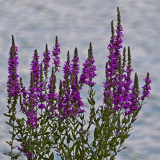- Forum
- General Discussion | Introductions | Off Topic Forum
- Photography General Discussion
- Camera club in 2023?
Camera club in 2023?
-

- LensofNature
- Has the Hang of it
-
- Canon Rebel T7
- Followers: 60
- Posts: 73
-
Points:
4550
Post #756705
-

- Kenya See
- The Lounger
-
- Nikon Z6 and D7000
- Followers: 235
- Posts: 1077
-
Points:
10289
Post #756825
kroneb wrote: Camera clubs can be a great way to meet other people who share your passion for photography. They often organize social events, such as field trips and photowalks.
-

- Clark Guay
- New Kid On The Block
- Followers: 18
- Posts: 19
-
Points:
455
Post #758652
-

- Roman Omell
- Photography Hooked
-
- Nkon D800
- Followers: 357
- Posts: 767
-
Points:
9149
Post #758707
-

- Howard Swanson
- Lone Wolf
-
- Nikon D750
- Followers: 79
- Posts: 119
-
Points:
2519
Post #758897
-

- Kenta
- The Lounger
-
- Nikon D810
- Followers: 172
- Posts: 1005
-
Points:
13417
-

- CharleyL
- Photography Hooked
-
- Canon 90D, (2) Canon 77D, Fuji HS20 EXR, Still have my Sony MVC-FD95
- Followers: 73
- Posts: 947
-
Points:
37175
Post #759105
Although there seemed to be many members in the list, in a year and a half I can't remember more than about 8 in attendance. We ate and drank coffee together, and frequently viewed prints of each other's latest. Occasionally, there would be a group shoot planned, but it never fit into my schedule. I can remember one to a farm where their fields of Sunflowers were about to be harvested for the seeds. From viewing the prints brought in by others, this was quite an amazing sight. But when viewing the prints of several of these photographers it became obvious that almost everyone stood in the same places and took nearly identical shots. Why? If I had gone I would have been working hard to find the unusual shot, and not just repeating what everyone else was shooting.
I attended the meetings to meet new photographers and have friendly chats over great sandwiches and drinks, but rarely did a really interesting photography discussion occur in these meetings. When COVID hit, the group was disbanded and it seems to be gone forever.
Over this past year I've tried to get a few photographer friends interested in meeting in my studio to do lighting experiments and setups for shoots and to just have friendly chats, but this hasn't worked either. Maybe photography has become something that everyone chooses to do alone. I like to meet and trade ideas over coffee, etc., but I do prefer being on my own when out looking for "that perfect shot" as I would have done if I had been at those fields of Sunflowers.
Charley
-

- LensofNature
- Has the Hang of it
-
- Canon Rebel T7
- Followers: 60
- Posts: 73
-
Points:
4550
Post #759132
-

- LensofNature
- Has the Hang of it
-
- Canon Rebel T7
- Followers: 60
- Posts: 73
-
Points:
4550
Post #759133
-

- CharleyL
- Photography Hooked
-
- Canon 90D, (2) Canon 77D, Fuji HS20 EXR, Still have my Sony MVC-FD95
- Followers: 73
- Posts: 947
-
Points:
37175
Post #759135
From my teens until 1978 I spent considerable time on long hikes that later included my three sons, when they became old enough. Most of these trips were in the mountains about 30 miles North of NY City along the Hudson River and into Connecticut. In all those years I never felt threatened while miles away from civilization, at least not by another human or several. A mile or so from the parking lot you will discover very few people and those you meet will all be like minded about being out there and enjoying the solitude, and very happy to share a short friendly chat with probably the first person that they have met in a day or two. There is very little trash once away from the parking lot too. The trouble makers, beer party attendees, and garbage droppers all seem to stay quite close to where they entered the trail. Ice chests for their beer are way too heavy to carry further. Deeper into a forest area your biggest threat will be animals like chipmunks, who watch for bits of your breakfast to fall near them. Give them some small pieces of scrambled egg and in a couple of minutes they will be on your knee and sitting up on their hind feet begging for more. They tame quickly. Give them a few shelled peanuts, and then enjoy watching them try to get the fifth peanut into their cheeks before giving up and running off to take this wonderful treat home, so they can come back to beg for more. At night the biggest threat is raccoons and possums. If you keep your food sack hanging from a high branch they can't get to it and won't bother you. My cousin once had a raccoon sneak under his tent flap and eat about 1/2 of a loaf of bread that he had stashed next to his head and forgot to put up in the food sack. My cousin never woke up and the raccoon never bothered him, just carefully ate the bread until he was full and left. We knew he was a raccoon by his tracks in the soft dirt next to the tent. My cousin was way more attentive about securing his food (and bread) high in a tree after that.
Black Bears are very rare in Southern NY State. In the Northern parts there are black bears and some precautions are needed there for them. The shelters on the larger trails are 3 sided and most are stone with wood roofs and a metal roof top surface. In bear areas, chain link fencing has been placed across the open (South Facing) side with a chain link fence covered door, as protection against bears. If hiking in those areas I recommend planning to spend your nights in one of these shelters no matter how crowded it is. Make friends with someone before dark and sleep next to them. You will be both comforted this way. During the day, rattling metal cups swinging from your pack works well to keep the bears moving away from wherever you are, but carrying pepper spray is a good idea too, and it could be a good defense for human threats too. Very loud noises, like even growling and yelling back at them works quite well. They are, in most cases, more afraid of you than you are of them, but don't ever get near a bear cub and especially not between the cub and it's mother. Their instinct tells them that you are a threat to their baby and this will almost guarantee that you get attacked.
Snakes can feel the ground vibration as you walk, and in most cases will be far from the trail you are on long before you get to where they were. Thumping a walking stick on the ground as you walk along reinforces this vibration, making them think you are bigger than you are and your chances of meeting them will even be less, but snakes are something to be aware of. At least you can run faster than they can move. Watch when climbing rocks to see where you are about to place your hands and feet so you don't grab or step on a sleeping snake. You should know what the kinds in the area will look like and which are poisonus. Beware of snakes with Triangle shaped heads as most poisonus snake heads are shaped like this since their fang teeth fold back into the wider parts of their head. In other areas there are snakes that don't have these triangle shaped heads, but are poisonus, so learn what they look like before hiking there. None of them want to meet you and will retreat before you get there, if they know you are coming and if they can, and if you don't surprise them or corner them. They too are more afraid of you than you are of them.
So, in the area that I have spent time hiking and camping in the forests of NY, CT, and NJ in all those years (I'm 81 now), I have never had a serious threat from an animal or human. You stand a much better chance of falling or burning yourself in a camp fire accident than from an attack by human or animal, especially if you have someone with you. Even a human considering an attack will think twice if you are not alone.
So make friends with someone with a car who would like to go walking in the forest, even if they aren't a photographer. Maybe while walking with you taking pictures, they will get the photography bug too. If not, at least you have a friend with a car who also likes walking in the forest too.
Charley
-

- LensofNature
- Has the Hang of it
-
- Canon Rebel T7
- Followers: 60
- Posts: 73
-
Points:
4550
Post #759174
-

- CharleyL
- Photography Hooked
-
- Canon 90D, (2) Canon 77D, Fuji HS20 EXR, Still have my Sony MVC-FD95
- Followers: 73
- Posts: 947
-
Points:
37175
Post #759227
New York State has lots of black snakes, and many copperheads. The copperheads are the dangerous ones and do have the triangle shaped head, where the black snakes do not. Black snakes are not poisonous.
In some small areas there are also timber rattlers, again with the wide triangle shaped head, but also with the rattle at the end of their tail. These are not very prevalent and in all of my hiking I have never even seen one, except in museums. Their wide head and rattle make them easy to identify. Those in the museums had black markings on a pale yellow body.
There are lots of black snakes and slight variations of them in color and markings. None are poisonous, and most adults are 2-4' long and 2-3" in diameter, but they can grow to be very much larger.
None of the small head snakes in this area are poisonous. Many garden, green, and yellow snakes and variations, and and all are less than 3 ft long and 1" diameter.
They also have hog nosed snakes and these are worth a separate noting, because there are quite a few of them in pocket areas around the region. My one significant encounter with them was in a marshy area a little South of Pawling, NY in SE Dutchess County. These snakes are colored similar to copperheads, though slightly darker similar patterns on black bodies, but they have a small head and the funny flat nose shape similar to a hog/pig. If a hog nosed snake is threatened, they will rear back, head high like a cobra, and hiss at you. Striking or severely threatening them might get a strike like a rattle snake when they appear to bite you, but they don't usually even open their mouth, just butt you with their head. When all else fails they will simulate death like an opossum, and turn their head inside out and back on their body, head one way and jaw the other, making them look like their head was cut off and they cease moving, playing dead. They will remain like this until the threat ceases (you or the threatening animal leaves the immediate area). Then they will come back to life and go hide somewhere. My one encounter had three of them close together and all reared back and hissing at me, so a quick retreat back to safer ground, was my response. Another day my uncle was trying to retrieve a model R/C airplane and encountered them. He wanted the airplane bad enough that he continued in his attempt past them to retrieve the airplane and was struck in the leg twice, but with no bite and no damage. I think he had dealt with them before and wasn't afraid of them.
Generally, no snake or larger wild animal wants to encounter a human, and if they sense that you are near they will do their best to be gone before you get there. Noise and vibration of the ground from walking is usually enough of a warning to them. But a close encounter is possible if they don't sense you coming. Climbing a steep rocky hill on a warm spring day and reaching for a rock high above your eye level is a good way to discover a hand full of startled snake. Look before you reach or step. They like the warmth of the Sun and come out of the ground to warm up on the rocks.
Skunks are easy to identify, usually by their unmistakable smell and black bodies with white stripped backs from head to tip of tail. Threaten them and you might suddenly begin to smell like them when they spray you. It's potent, and very hard to clean off. They are night feeders too, and not very fast moving. They will avoid you if you don't corner them, as will most other wild animals but they don't see very well, even if out when it's light.
The chipmunks are more like a hamster, brown and similar size, but with racing stripes of black and white the length of their bodies and a kind-of shape like a young squirrel. They hunt for food 24/7 with short naps between foraging trips. Like I said before, they tame easily when their stomach is getting satisfied. They are a lot of fun to watch, especially when in groups of 2 or more, but they will also keep their distance from humans unless food aroma or an impending hand-out draws them closer. They do bite if you try to pick them up though, again much like a threatened hamster and they are not poisonous.
You usually won't see raccoons, skunks, opossums, rabbits, foxes, or deer in the daytime. They are night feeders and avoid humans that way. If you do see one in the daylight, they are maybe more hungry than usual, so out searching for food a little early, usually in the low light evenings. If you see an animal during the bright daylight and it's wandering and staggering around stay far away from them, because they likely are sick with rabies. I've only seen a rabid skunk one time, and it was walking circles in a vacant lot, stopping randomly and swinging it's head high and over it's back for a bit, then resuming the wandering circle. Obviously this is not a normal action for any animal, especially a wild one, and the game warden verified that this skunk was rabid and shot it.
So, more information about the animals in the forests of NY and New England, but most other parts of the country have similar animals, so much of this will apply. You just have to know what animals that you might encounter during your planned walk. Many will be the same if here in the USA, but there are other animals in other parts of the country that you may encounter. Be knowledgeable of what is there, and how to deal with them. In most cases the "more afraid of humans than humans are afraid of them rule applies ". Carry a walking stick. It helps when walking on rough ground, but it also makes a good weapon for animal or human hostile encounters. Make noises like a rattling metal cup freely swinging from your pack. A police type whistle can be effective too, but please don't take air horns or similar. Blowing one every hundred feet of your walk is likely to empty the whole forest of it's animal population. It's nice to be able to see and photograph the animals in their habitat. You only need to keep them at a safe distance, not running into the next county. It's their home, so respect it and be polite with them.
Charley
- Forum
- General Discussion | Introductions | Off Topic Forum
- Photography General Discussion
- Camera club in 2023?
Latest Reviews
The Sigma DP2 Quattro is a rare breed. It’s a large-sensor point-and-shoot camera with a 29MP sensor and a 30mm f/2.8 fixed lens. The question is, who is this camera for? Let’s find out!
I’ve been testing the Vanguard VEO 5 264CB-160S for several weeks now, and I have to say that my first impressions are nothing but good. Vanguard has knocked it out of the park yet again!
The Fujifilm X-H2s is Fuji’s flagship hybrid APS-C mirrorless camera. It launched in the summer of 2022 and has been impressing photographers and videographers alike ever since!
The Sony a9 III is a powerhouse professional-grade camera. The question is, should it be the next item in your camera bag? Find out if it’s worth the money in this comprehensive review!
Forum Top Posters
-
1Hassner 5 posts
-
2Razky 5 posts
-
3Roman Omell 3 posts
-
4Crammer 3 posts
-
5I shoot RAW 2 posts
-
6MYoung 2 posts
-
7great.crea... 2 posts
-
8Ben Vanderbilt 2 posts
-
9Scotty 2 posts
-
10M Moore 2 posts
Latest Articles
The Canon EOS R1 was finally released last week, and the question is - does it live up to the hype? Let’s dive in and explore firsthand what this camera does and doesn’t offer.
Improving your photography skills takes time, effort, and dedication. But with these unique exercises, you can make the process of becoming a better photographer more fun, too!
Night street photography is a fun pursuit with opportunities to develop your skills with portraiture, light trails, and architectural photography skills - and your nighttime photography skills, too!
The Canon EOS R5 Mark II has been unveiled, but it has a hefty price tag. If it’s out of your budget, the original Canon EOS R5 is a fantastic option. Learn more about it in this guide!
The Sigma DP2 Quattro is a rare breed. It’s a large-sensor point-and-shoot camera with a 29MP sensor and a 30mm f/2.8 fixed lens. The question is, who is this camera for? Let’s find out!
You need to try unique newborn photography ideas from time to time to keep your inspiration levels up. With the ideas in this guide, you can do just that!
What is the best landscape lens for photography - a prime or a zoom? The answer is a little murky, as it depends on the specific situation. Learn more about these lenses in this detailed guide!
Lightning photography is a tricky beast, but with the right tips, tricks, and tools, you can make the most of the next storm that rolls through. Learn some essential techniques in this guide!

















